AMD Radeon RX 6600 XT
Now that the current generation of graphics cards has been around for a while, and we have the Xbox Series X and PS5 inadvertently pushing the standards for PC games higher, it's not just 4K gamers that are going to need an upgrade. The AMD Radeon RX 6600 XT is meant to power next-generation games at 1080p, taking the Nvidia GeForce RTX 3060 head-on, especially when it comes to traditional rasterization without shiny ray tracing effects.
However, the Radeon RX 6600 XT also comes at a time where it's harder than ever to buy any graphics card, let alone the latest and greatest. Because of this, AMD bumped the suggested price above what the competing RTX 3060 comes with. And it's not hard to see why - it's not like you're going to find any graphics card at the retail price either way right now, so why not make it a bit more expensive?
But the current graphics card situation won't last forever, so the big question is whether or not the AMD Radeon RX 6600 XT will be worth it in the long-term, especially if you're still fine waiting a bit to buy a graphics card.
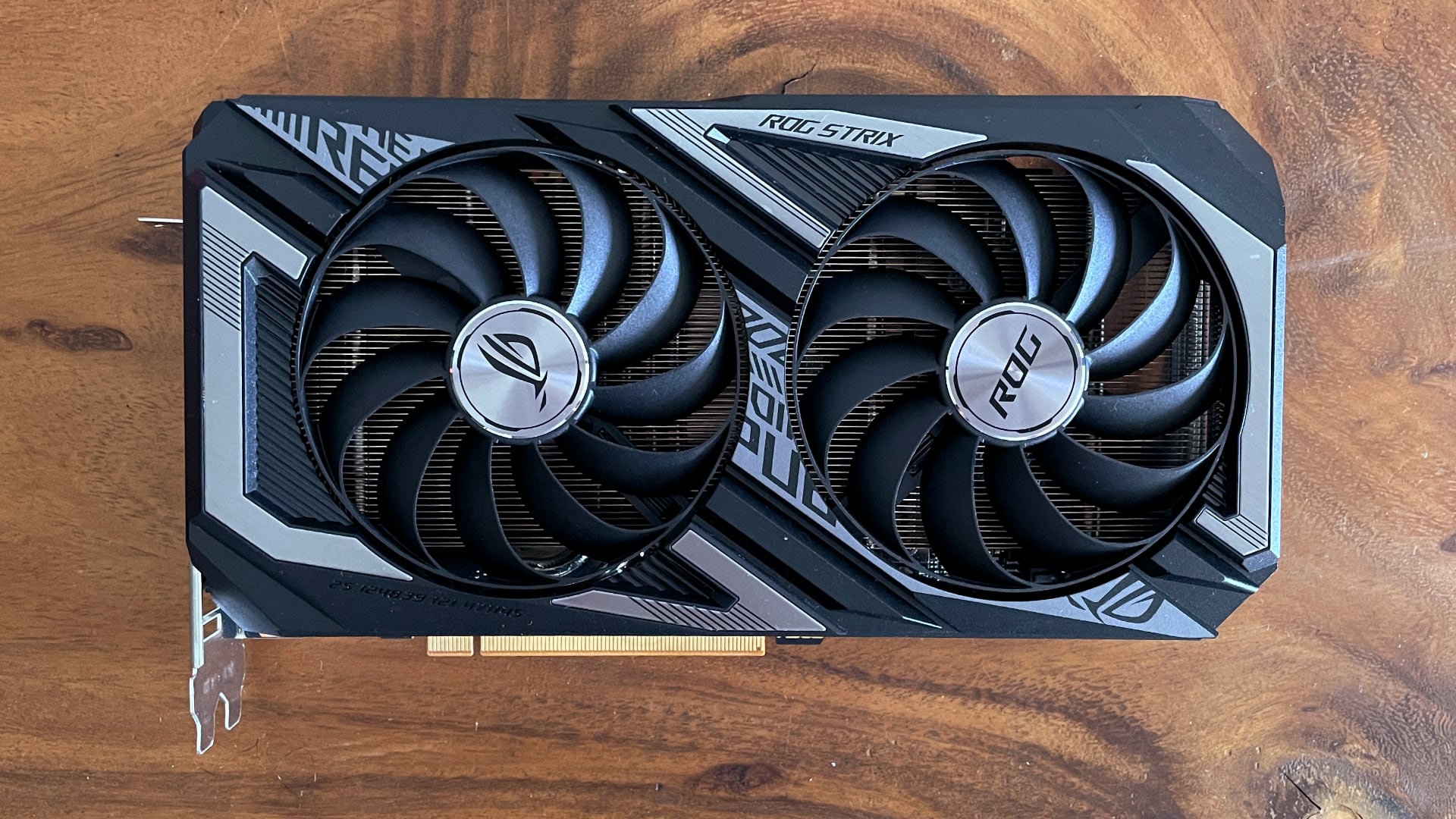
Price and availability
The AMD Radeon RX 6600 XT is available starting August 11, with a suggested retail price of $379 (AED 1,399). That price will, of course, go up from there and this time around AMD isn't selling its own version of the graphics card.
Instead, just like the Nvidia GeForce RTX 3060, the 6600 XT will exclusively be available through third-party graphics card manufacturers like ASUS and MSI - and the one we tested was the ASUS ROG Strix edition, whichhas an MSRP of $650 (about AED 2,399).
That extra price does get you some nice bells and whistles like a vented backplate, a dual BIO switch and the Axial-tech fan design. But, as we've seen with the same design on all kinds of graphics cards this generation - from the RTX 3080 to the Radeon RX 6700 XT, it doesn't really add much to your performance unless you're planning to overclock your graphics card.
But then again, because we haven't been able to test a reference spec AMD Radeon RX 6600 XT, we can't really say how much of a performance boost this version of the card is, or how much you're losing out if you go with a $379 version of the AMD Radeon RX 6600 XT.
Then there's the elephant in the room: the Nvidia GeForce RTX 3060 Ti which has an MSRP of $399 (AED 1,475) but it's around 20-30% faster than the RX 6600 XT. Most people will just spend the extra cash for the RTX 3060 Ti – if they can find it in stock, at least. There's a reason why it's our pick for the best graphics card.
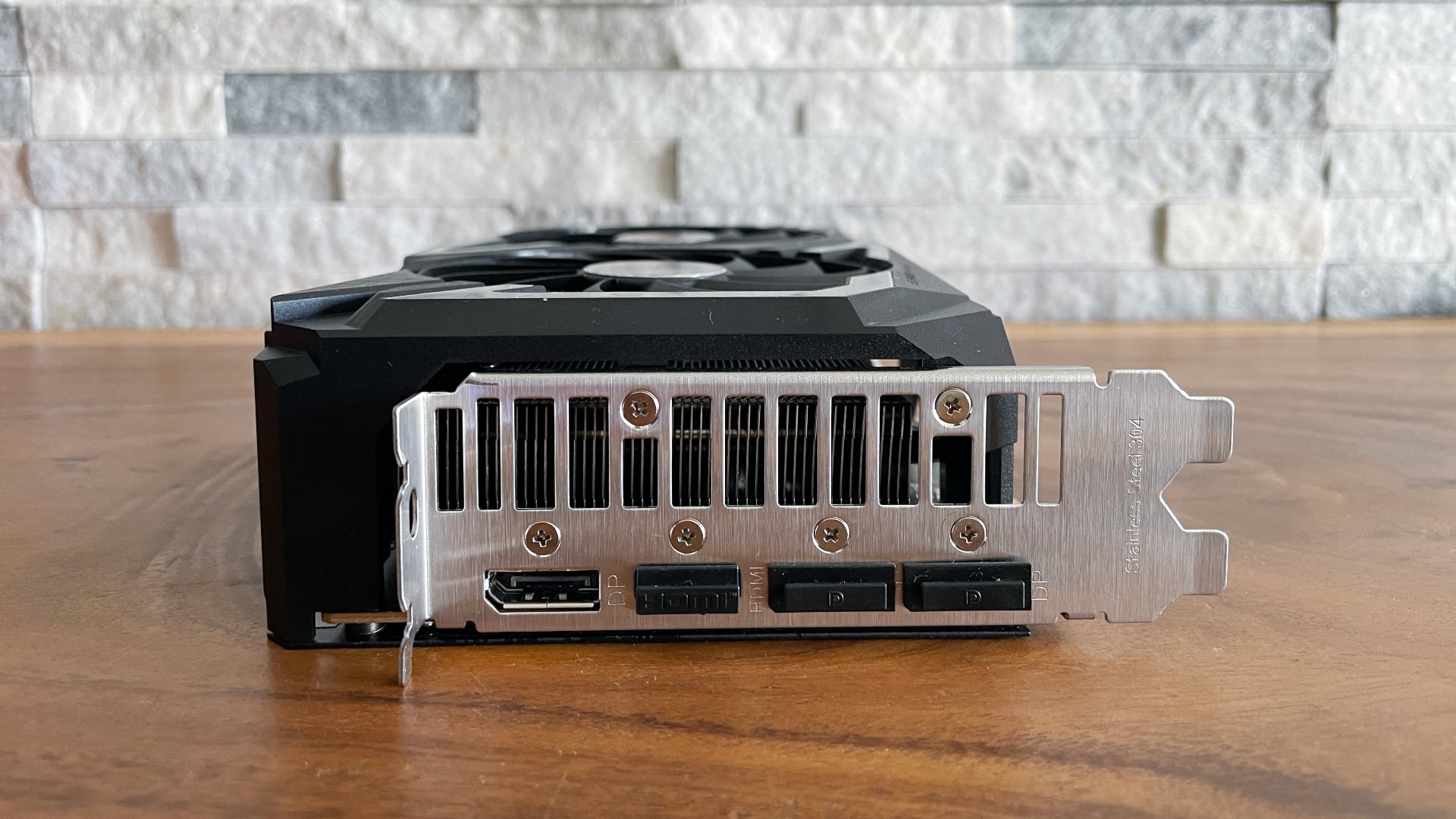
Chipset and features
Like the rest of the Radeon RX 6600 graphics cards, the Radeon RX 6600 XT is based on AMD's 7nm RDNA 2 graphics architecture. AMD's main focus here was to optimize RDNA, working in new features like hardware-accelerated ray tracing and boosting power efficiency. AMD also included Infinity Cache with RDNA 2 graphics cards, which massively improves memory bandwidth.
This means that these AMD graphics cards can have more memory for less cash, even though with the RX 6600 XT, at least, AMD opted for 8GB of GDDR6 memory, rather than the 12GB of GDDR6 that the Nvidia GeForce RTX 3060 brings to the table.
The AMD Radeon RX 6600 XT has 32 RDNA 2 compute units (CU), which means you're getting 2,048 Stream Processors (SP) and 32 ray accelerators – one per CU. That's quite a step down from the Radeon RX 6700 XT, which has 40 CUs, with 2,560 SPs. That's a 25% reduction in cores, and that pretty much correlates with the performance.
But at least you get quite a high clock speed. The AMD Radeon RX 6600 XT has a Boost clock of 2,589MHz, and a Game Clock of 2,359MHz. The boost clock is basically how fast the GPU will get in short bursty workloads, while the Game Clock is usually what you're see while actually playing games.
One huge feature has been added since the Radeon RX 6600 XT dropped back in March 2021, though: FidelityFX Super Resolution, or FSR. This is AMD's answer to Nvidia's Deep Learning Super Sampling (DLSS), and will basically upscale a game from a lower resolution to your native resolution. This is supported by the Radeon RX 6600 XT, but it's also available on pretty much any DirectX 11-ready graphics card – though performance will be much better on AMD's GPUs, at least for now.
Of course the features present on other AMD RDNA 2 graphics cards are still available. Smart Access Memory is a big one, and will let you squeeze out a bit of performance out of the Radeon RX 6600 XT. If you want to enable this feature, you're going to have to go into your BIOS and enable Resizable BAR.
This will give your CPU direct access to your GPU's memory, which should improve latency, and thus gaming performance. We look at it like overclocking, as you have to navigate your BIOS in order to enable it – at least for now – but if you're comfortable doing so, it's kind of a no-brainer to enable this technology.
Another great software feature here is Radeon Boost, especially if you play a lot of fast-paced competitive shooters like Rainbow Six Siege or Apex Legends. This will basically lower the resolution in scenes with a lot of movement, where you wouldn't necessarily notice the extra detail anyway. This then boosts framerate, and in games like these, a high framerate can be the difference between winning and losing, so definitely worth enabling.
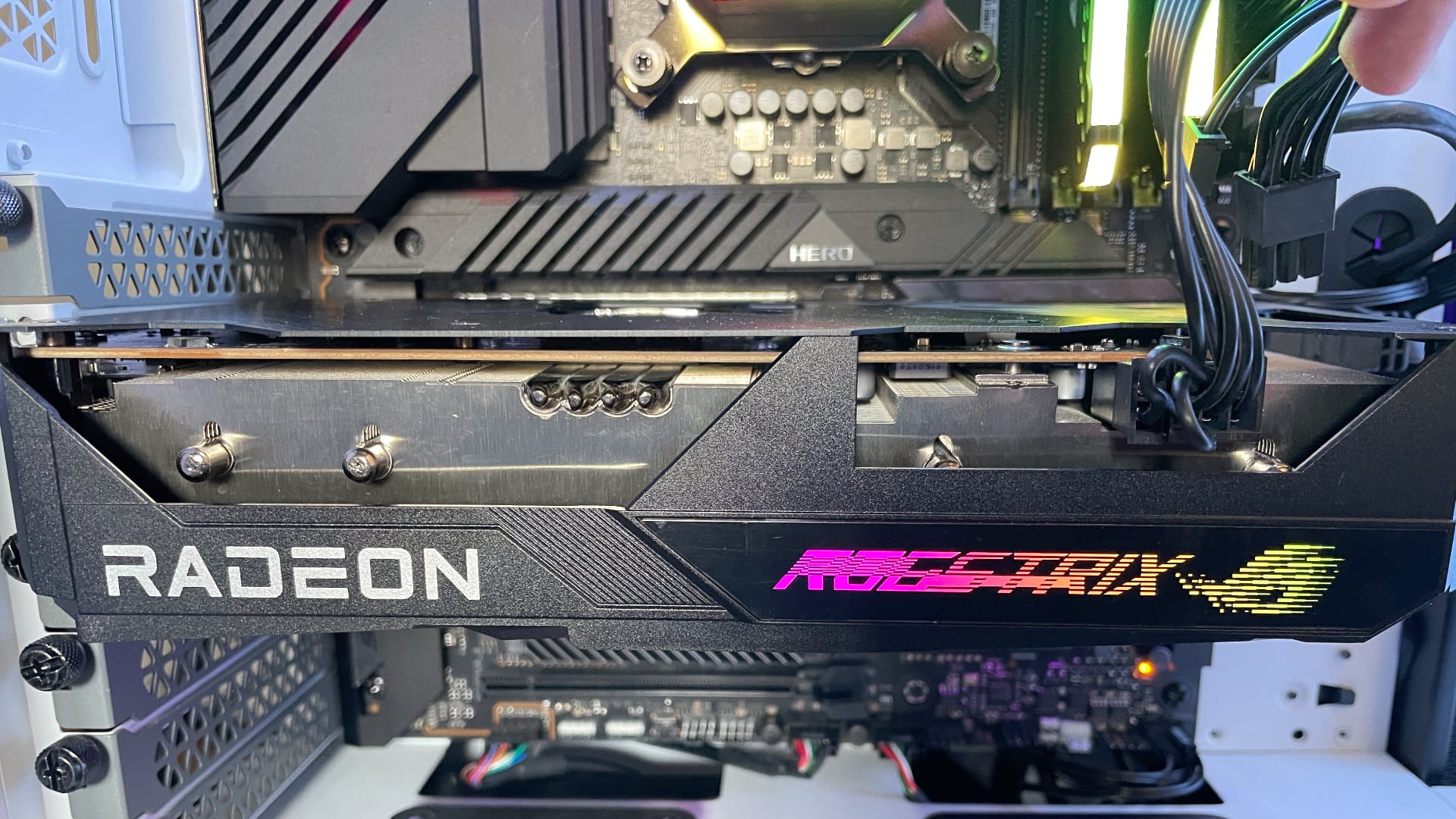
Design
Unlike the other graphics cards in the RDNA 2 lineup, AMD is not launching its own version of the Radeon RX 6600 XT. Instead, it's exclusively available through third party card partners like MSI and ASUS. The version of the card we were sent for review was the ASUS ROG STRIX RX 6600 XT.
The graphics card is just 9.6 inches (234mm) long which is short enough to equip it on an Intel NUC 9 PC but it takes 2.5 slots width which the NUC can't provide. That's a bit of a shame as the ASUS 3060 Ti can be purchased in a form factor that's smaller and thinner than the RX 6600 XT.
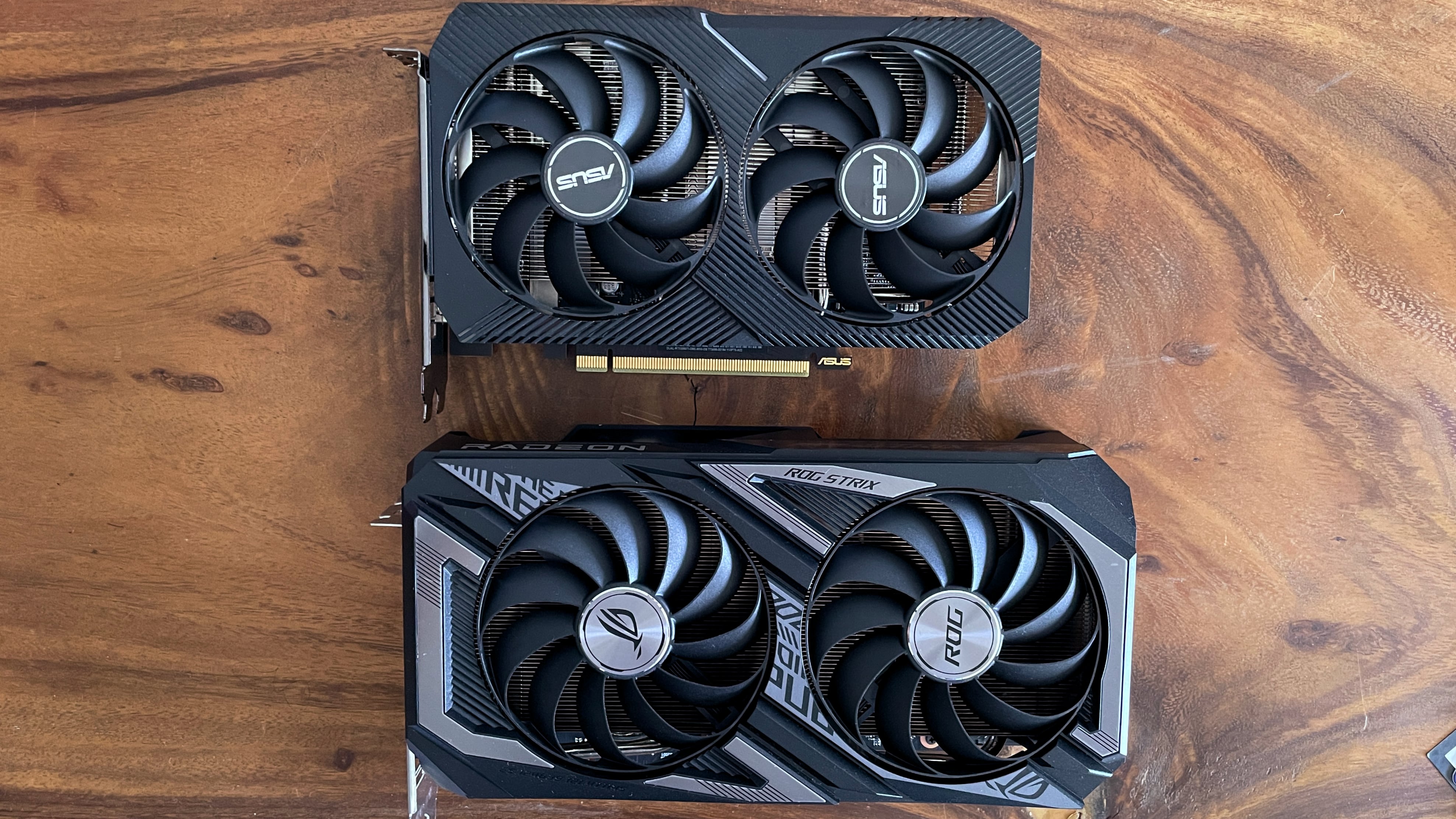
This graphics card has two fans while the shroud adds some RGB lighting. You can easily tell that the card has a very gamer aesthetic, with a black and silver colorway. There's a full metal backplate on the back.
The cooler is more than adequate for this GPU with a 160W TGP. The ASUS ROG STRIX RX 6600 XT stayed well under that 160W threshold, even in extremely demanding games like Metro Exodus Enhanced Edition, peaking at 146W of power. That's less than the RTX 3060 or the RTX 2060 Super, which peaked at 169W and 183W, respectively.
You should be able to just toss this GPU in your build and forget about it, without ever worrying about the ASUS ROG STRIX RX 6600 XT getting too hot.
As far as ports, you're getting three DisplayPort outputs and one HDMI 2.1 port. So, while this graphics card is definitely aimed at 1080p gaming, it is capable of outputting 8K video at 60Hz. Just don't go expecting to play games at that resolution.
For power, you just need one 8-pin PCIe power cable and AMD is recommending at least a 500W power supply.
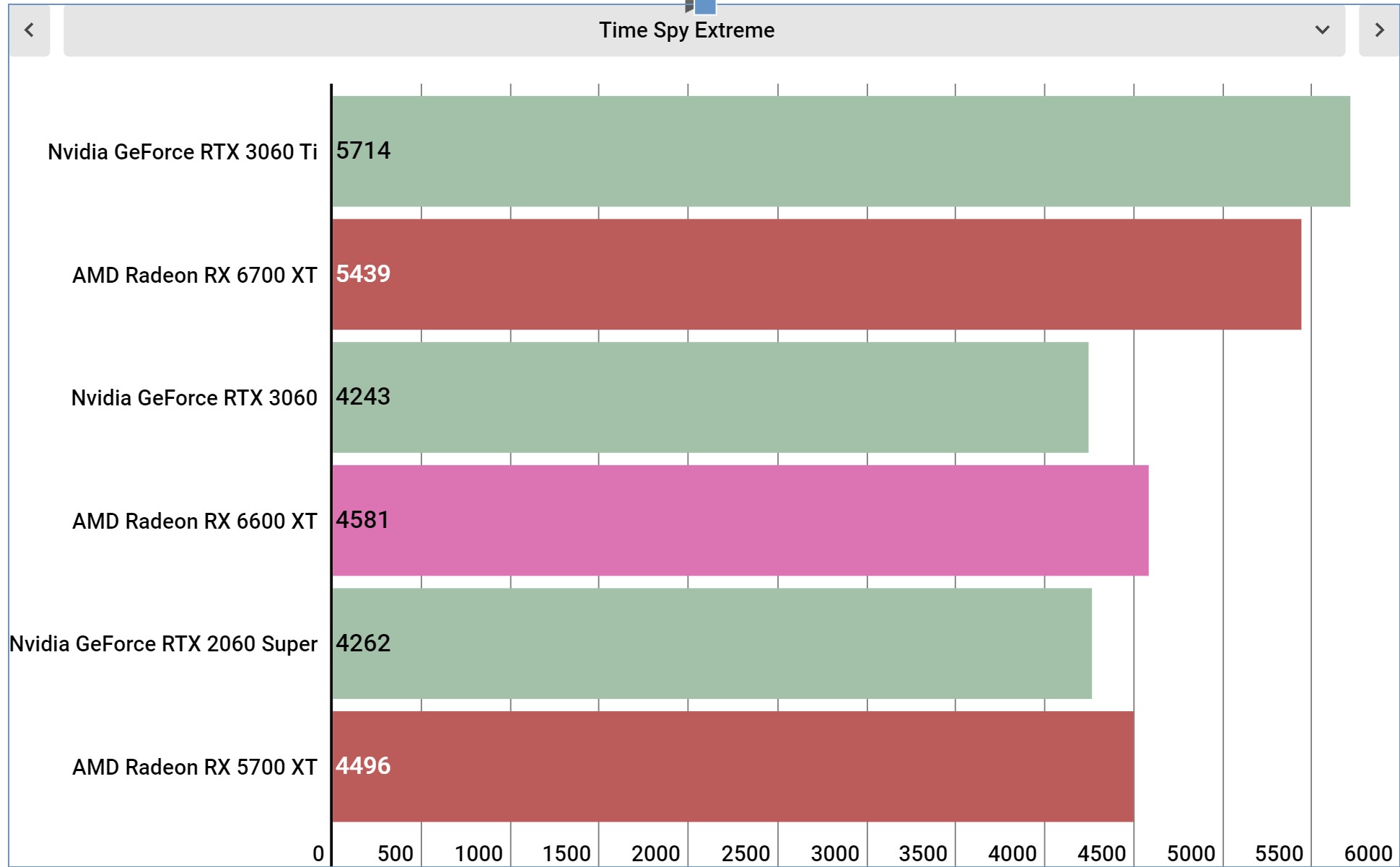
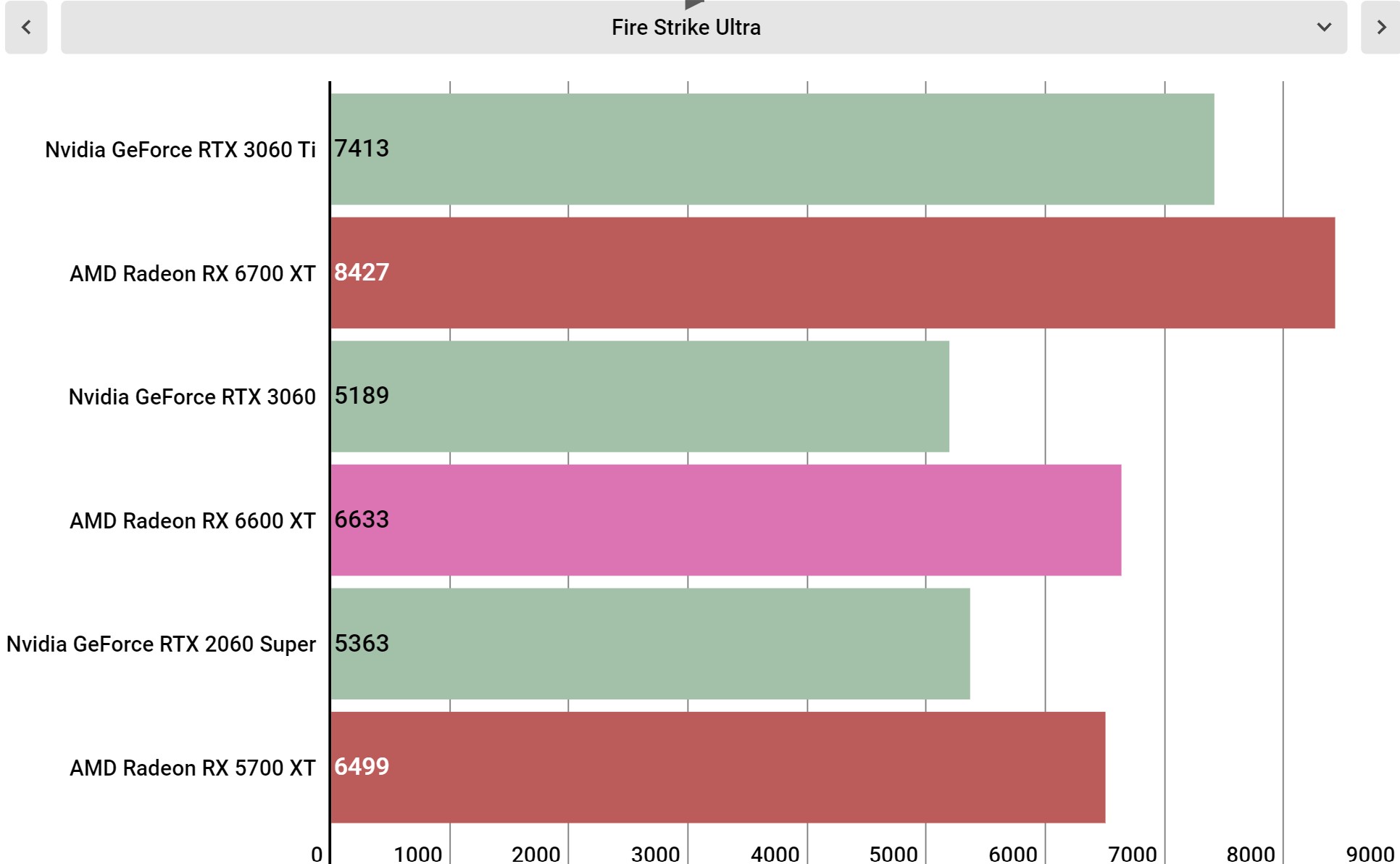
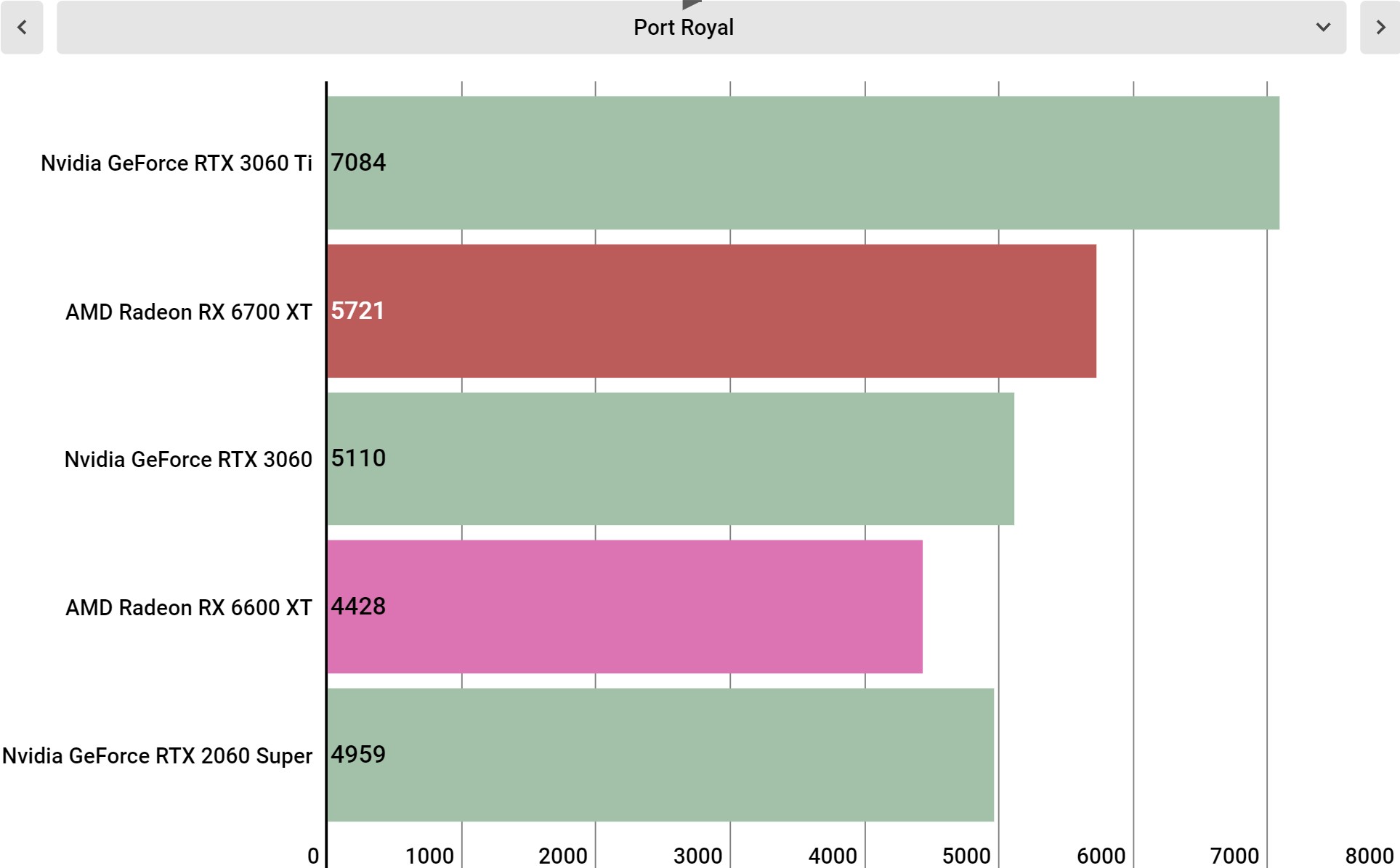
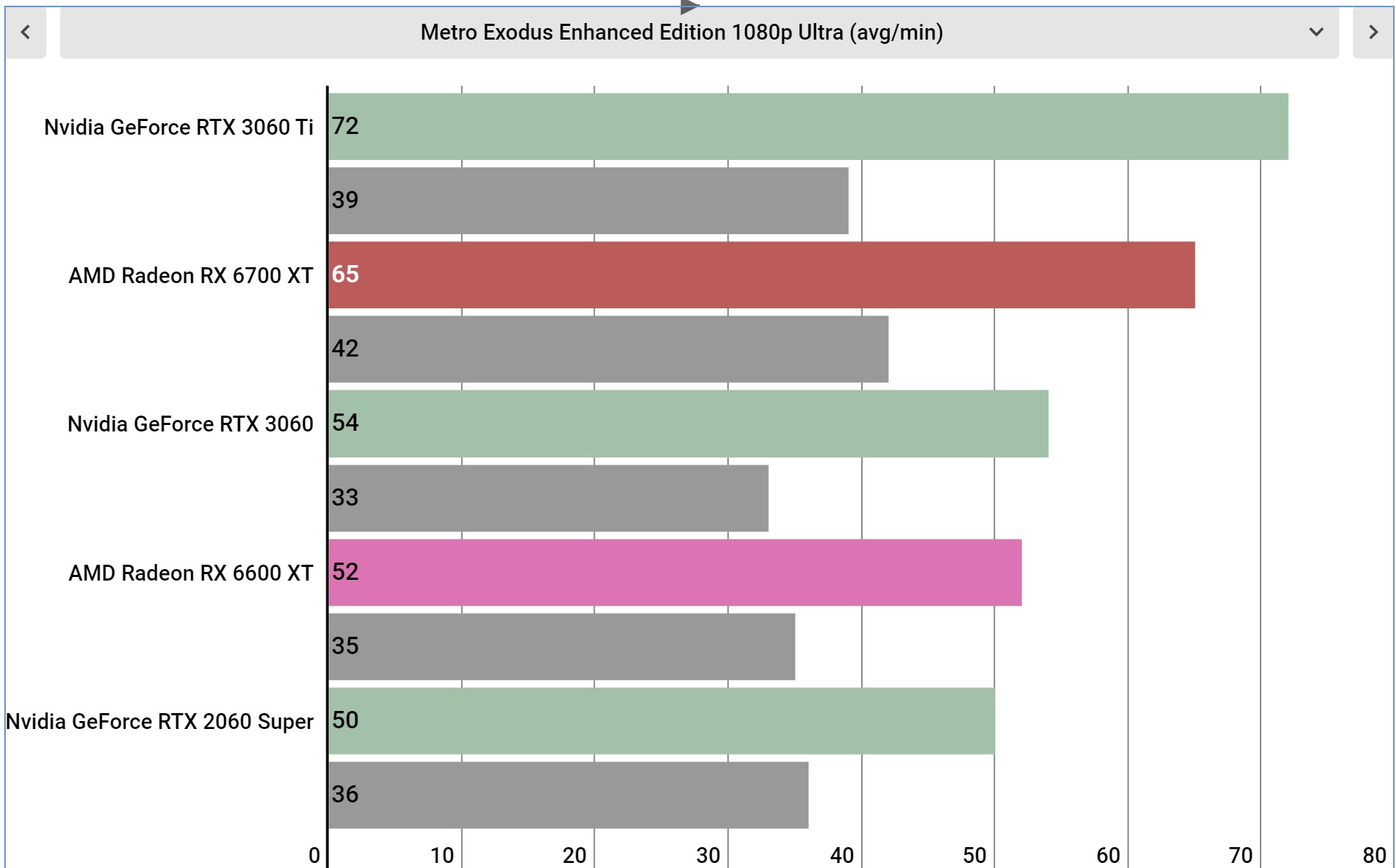
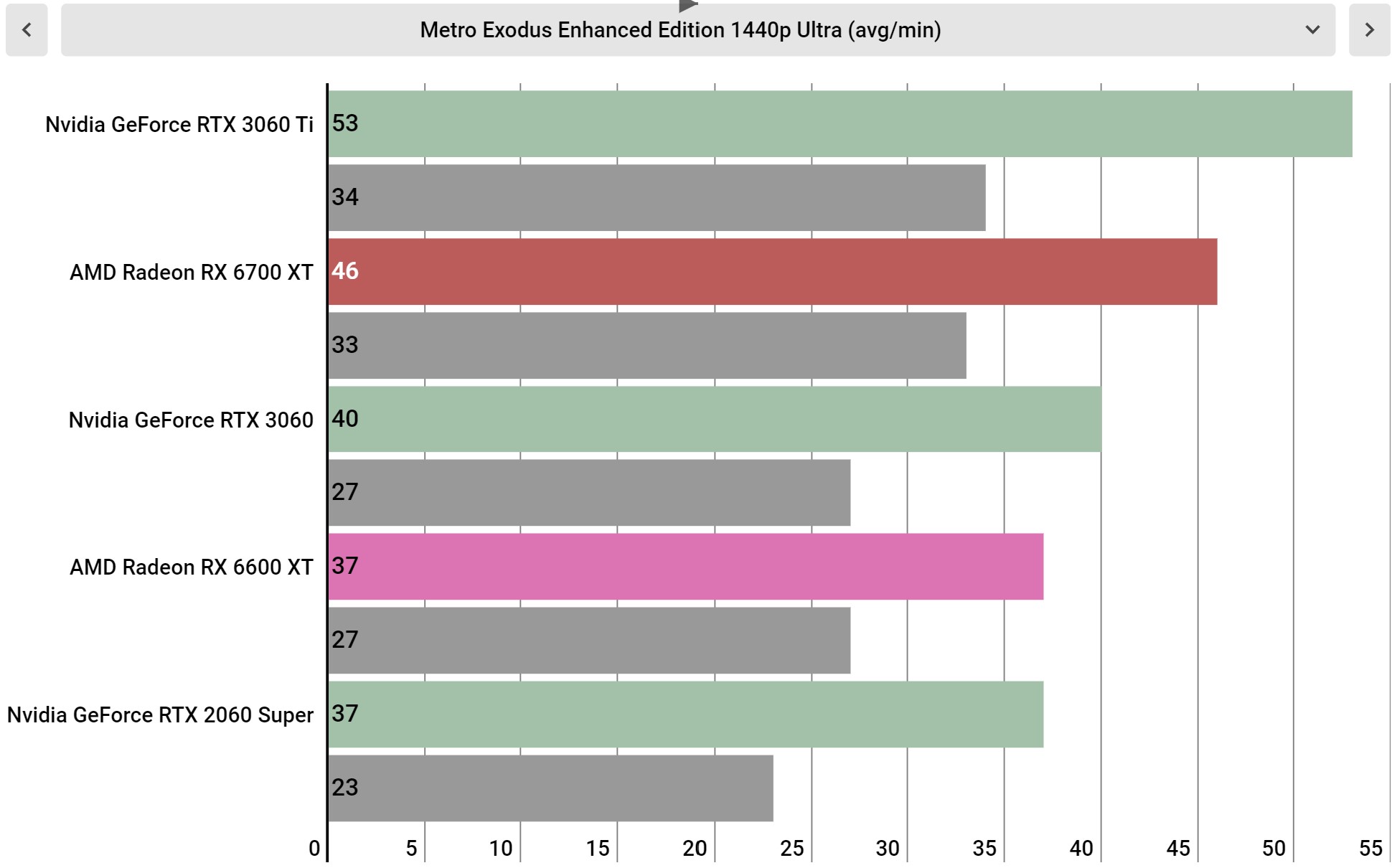
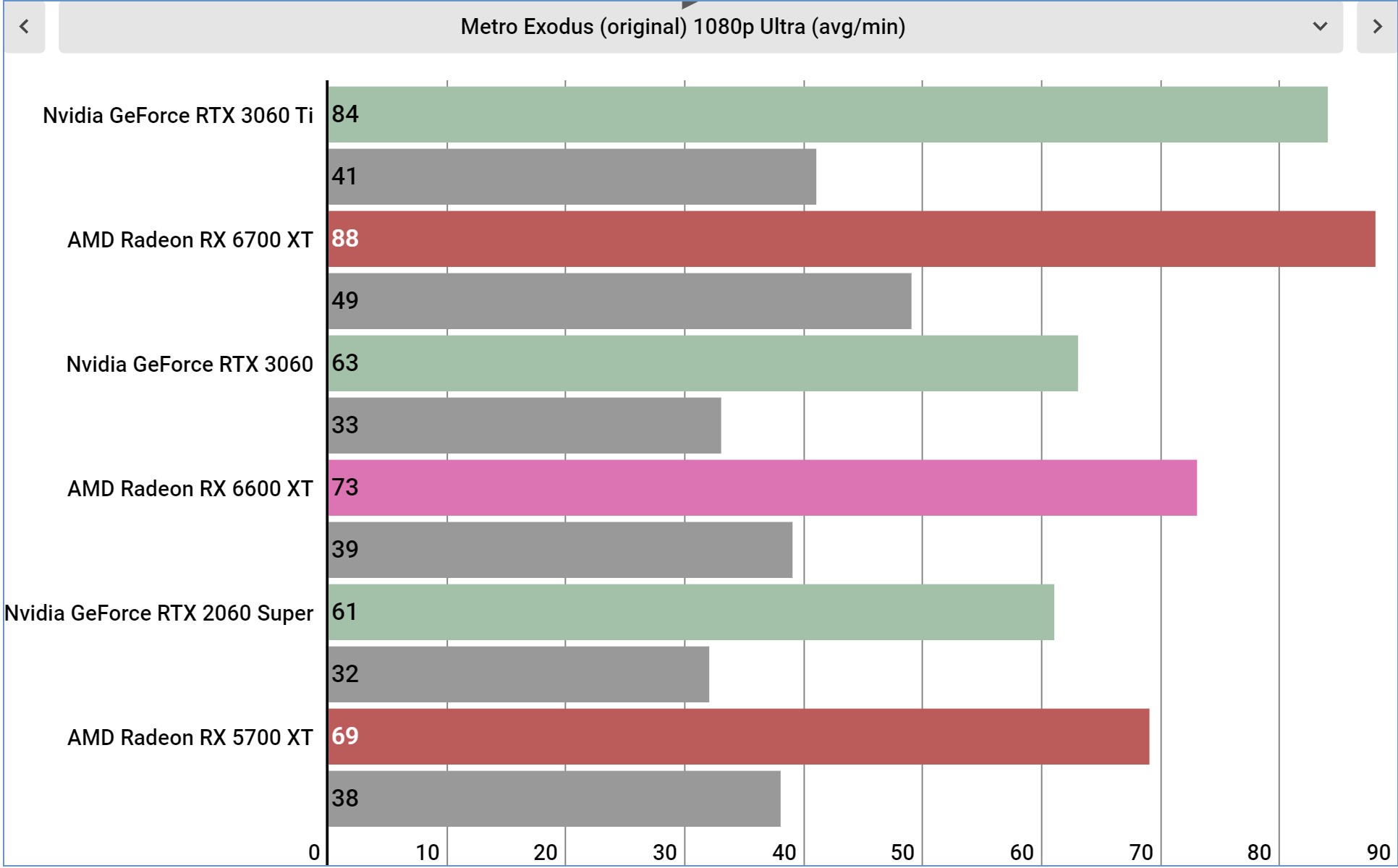
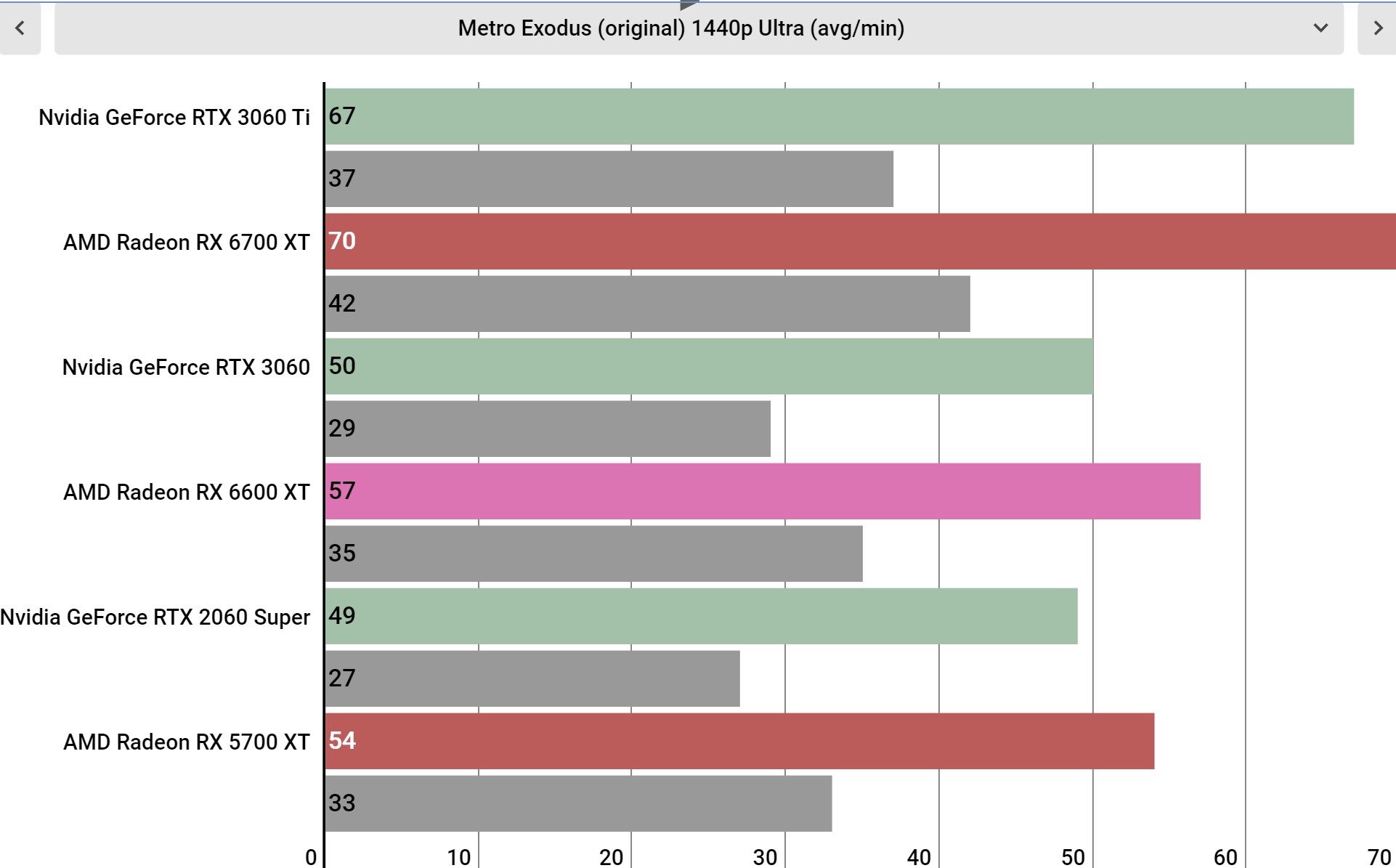
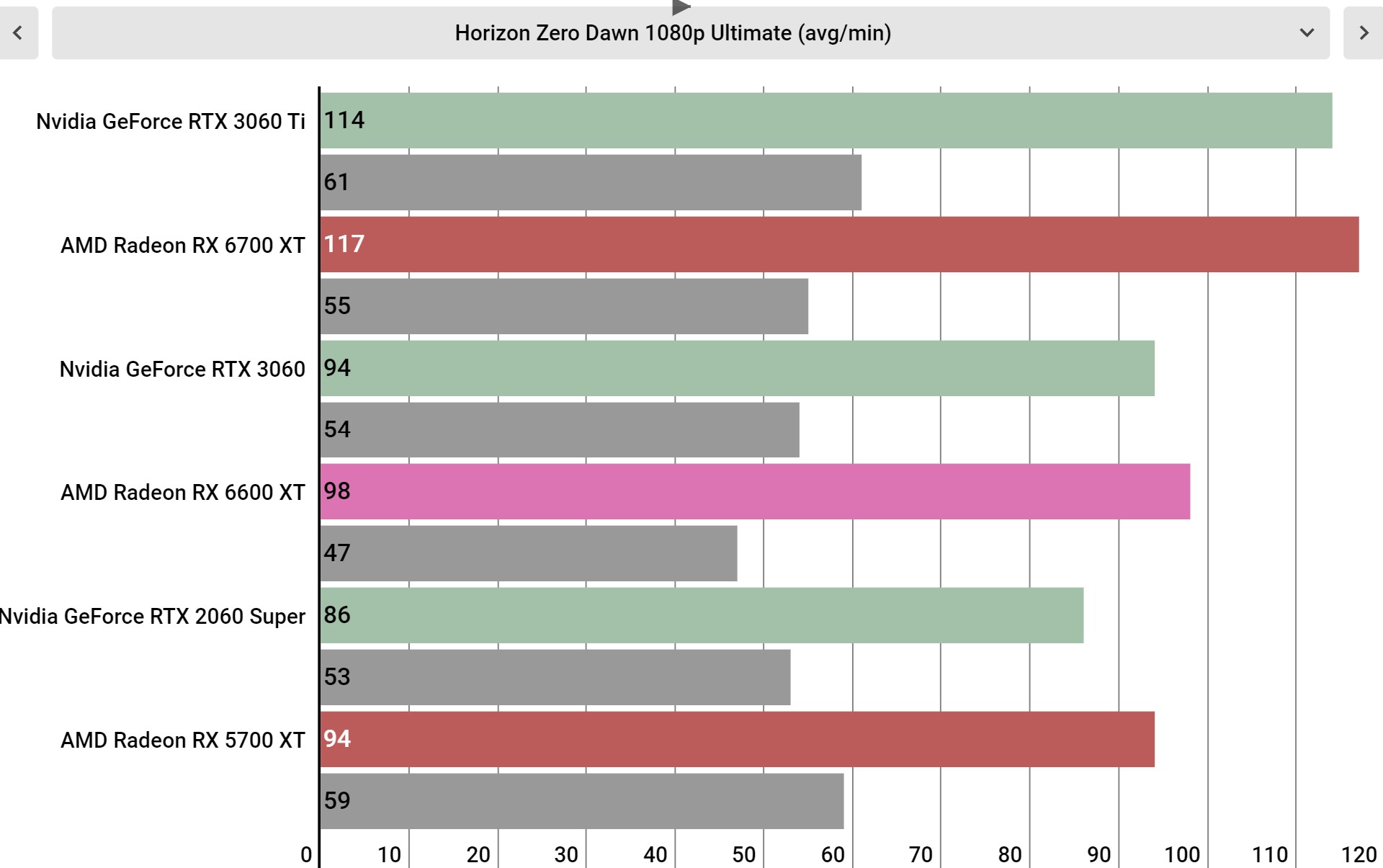
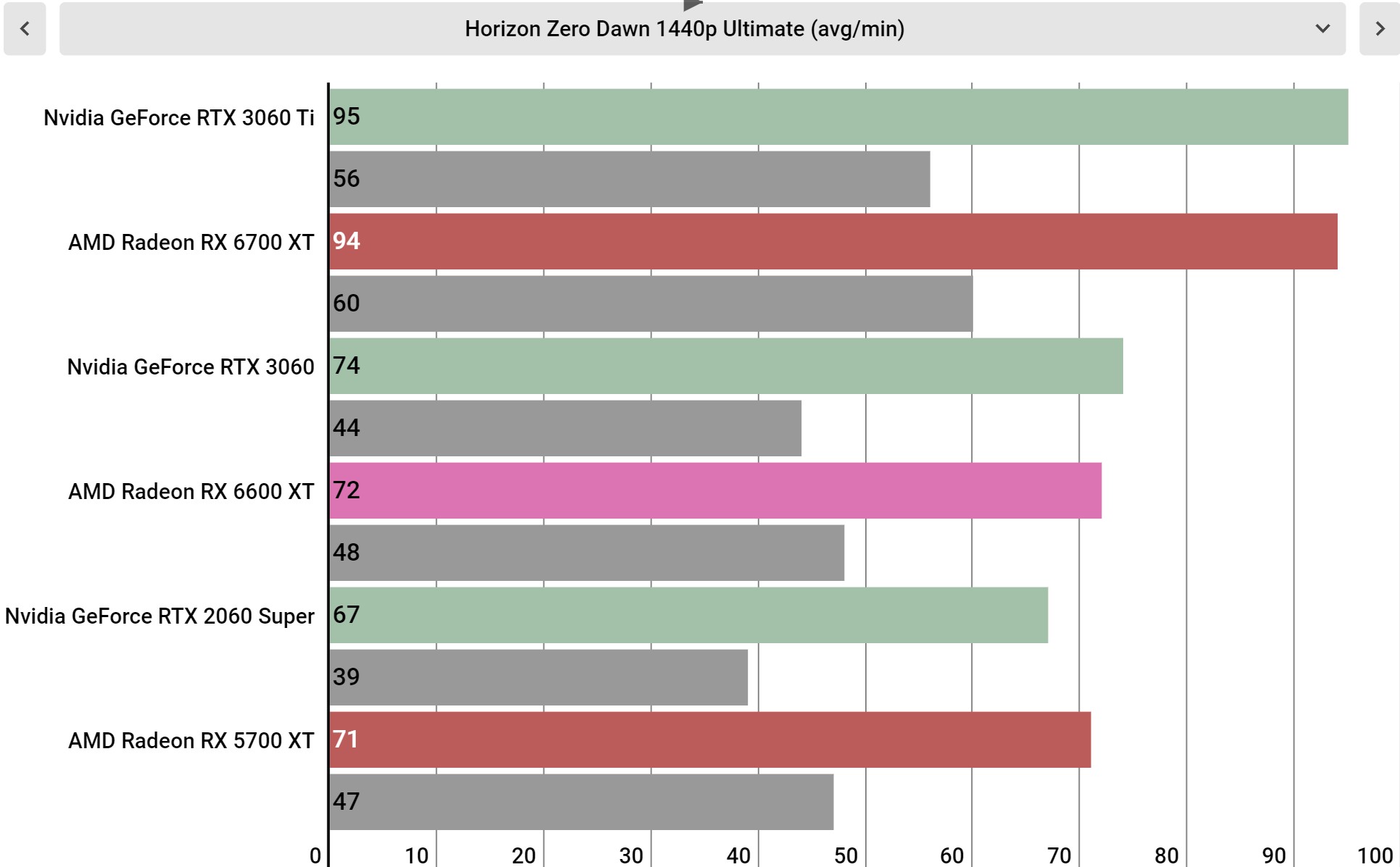
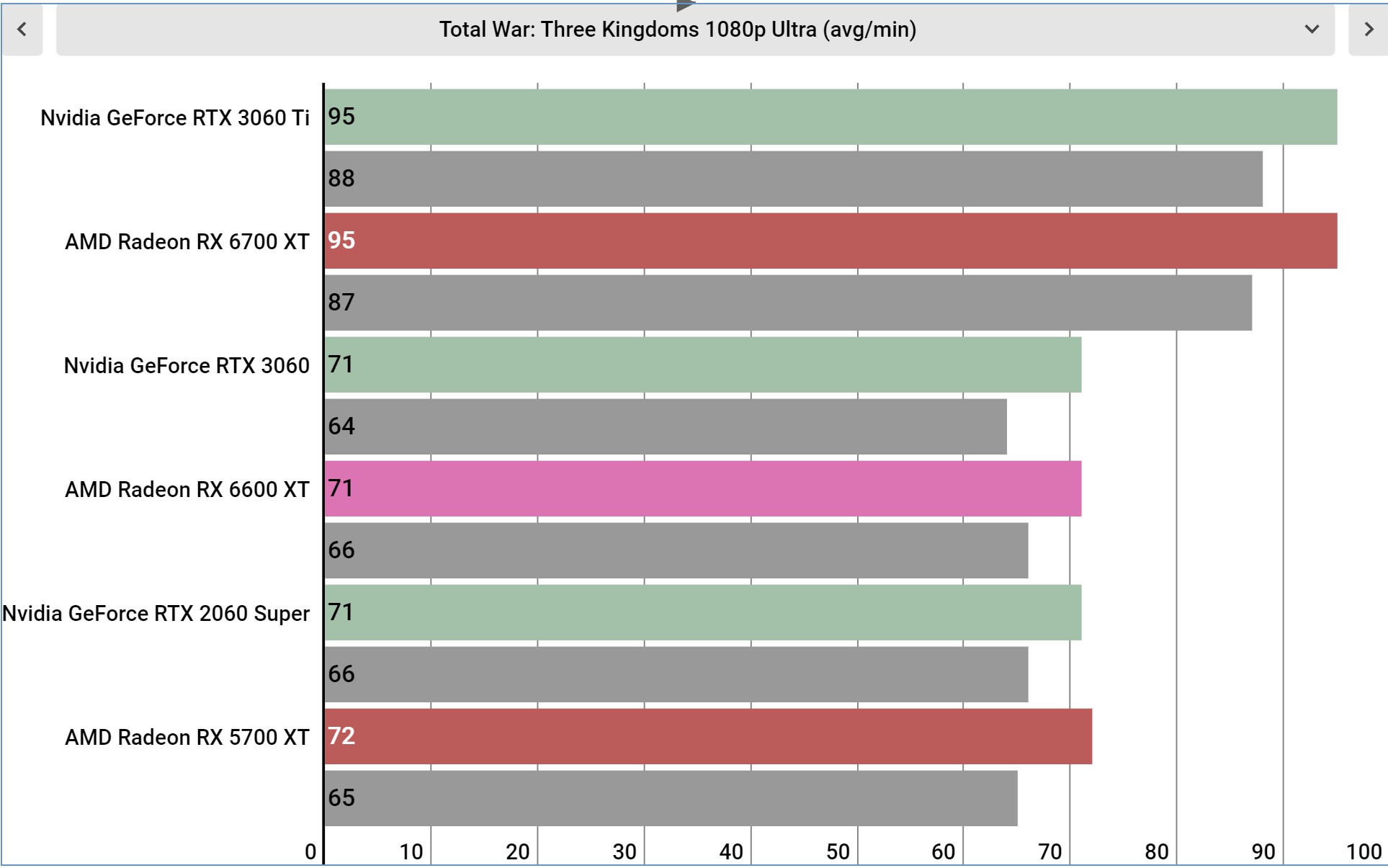

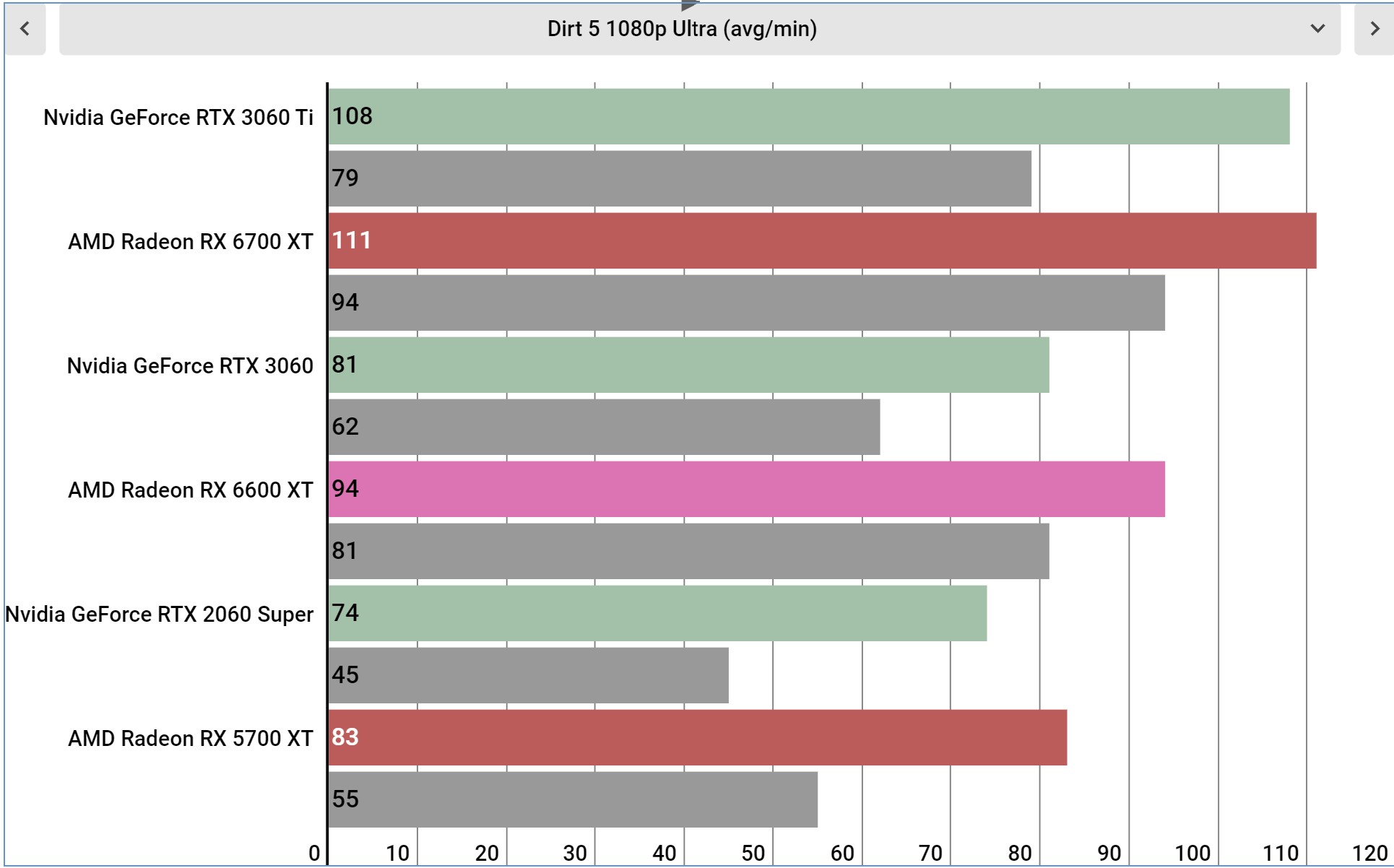
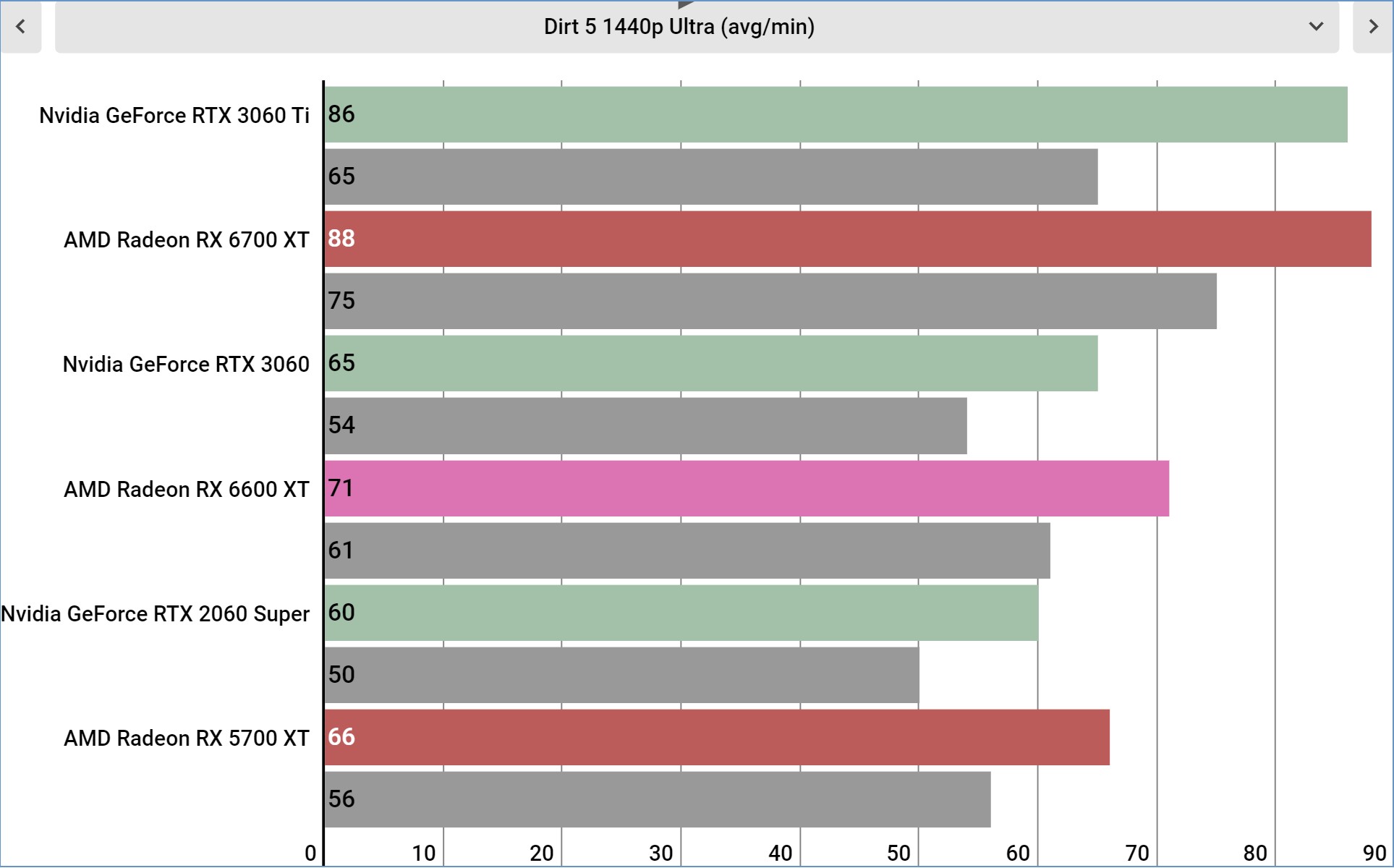
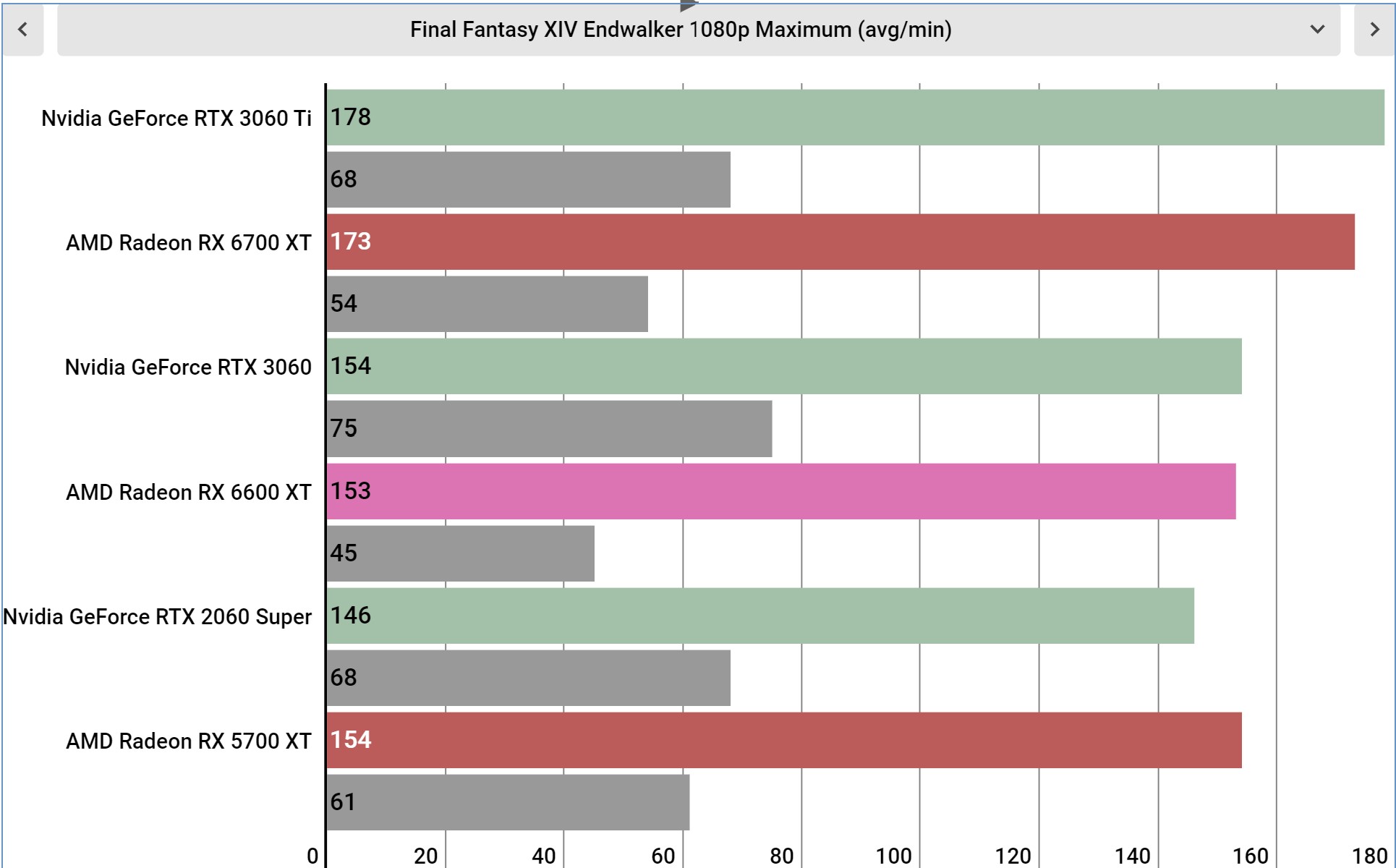
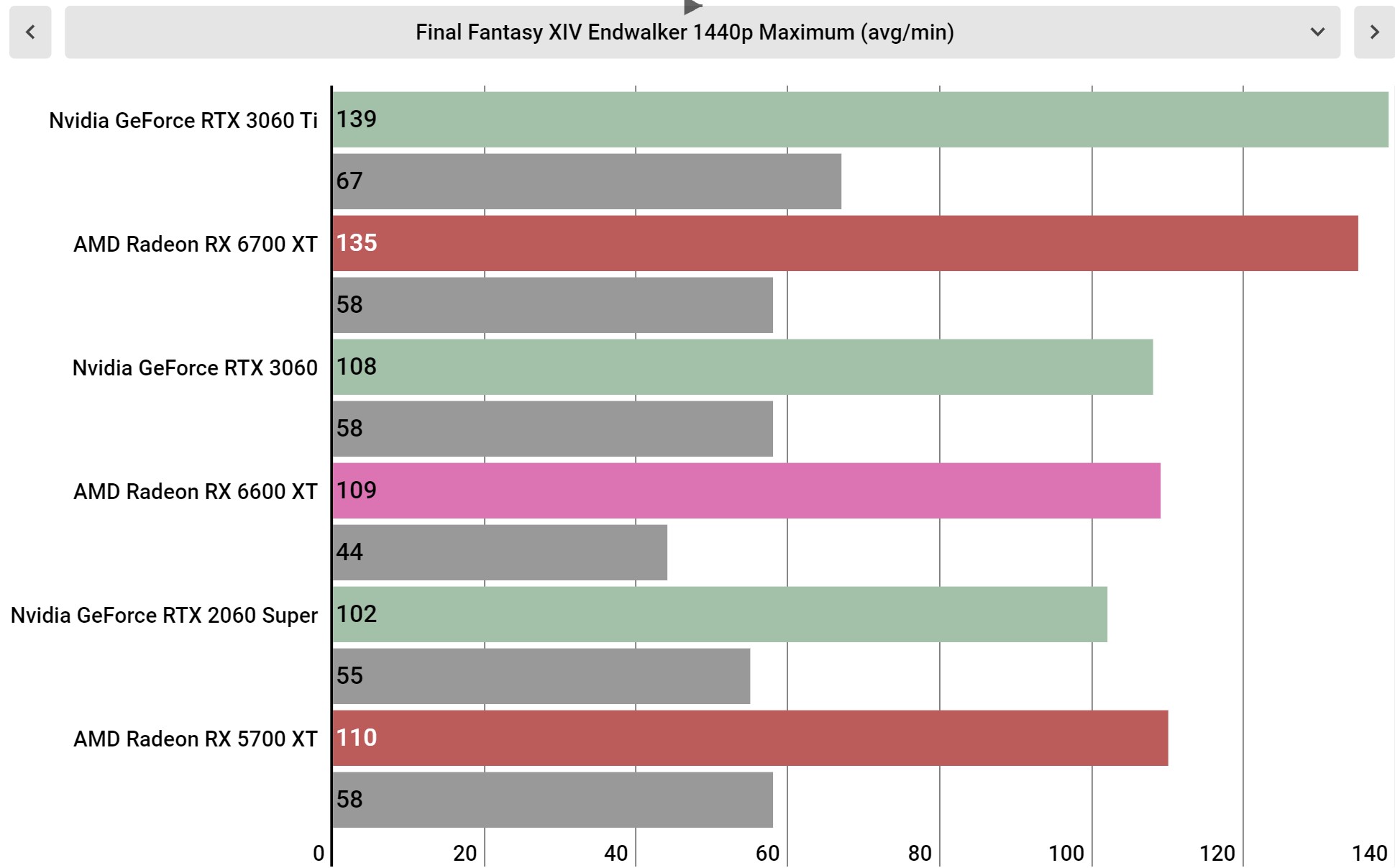
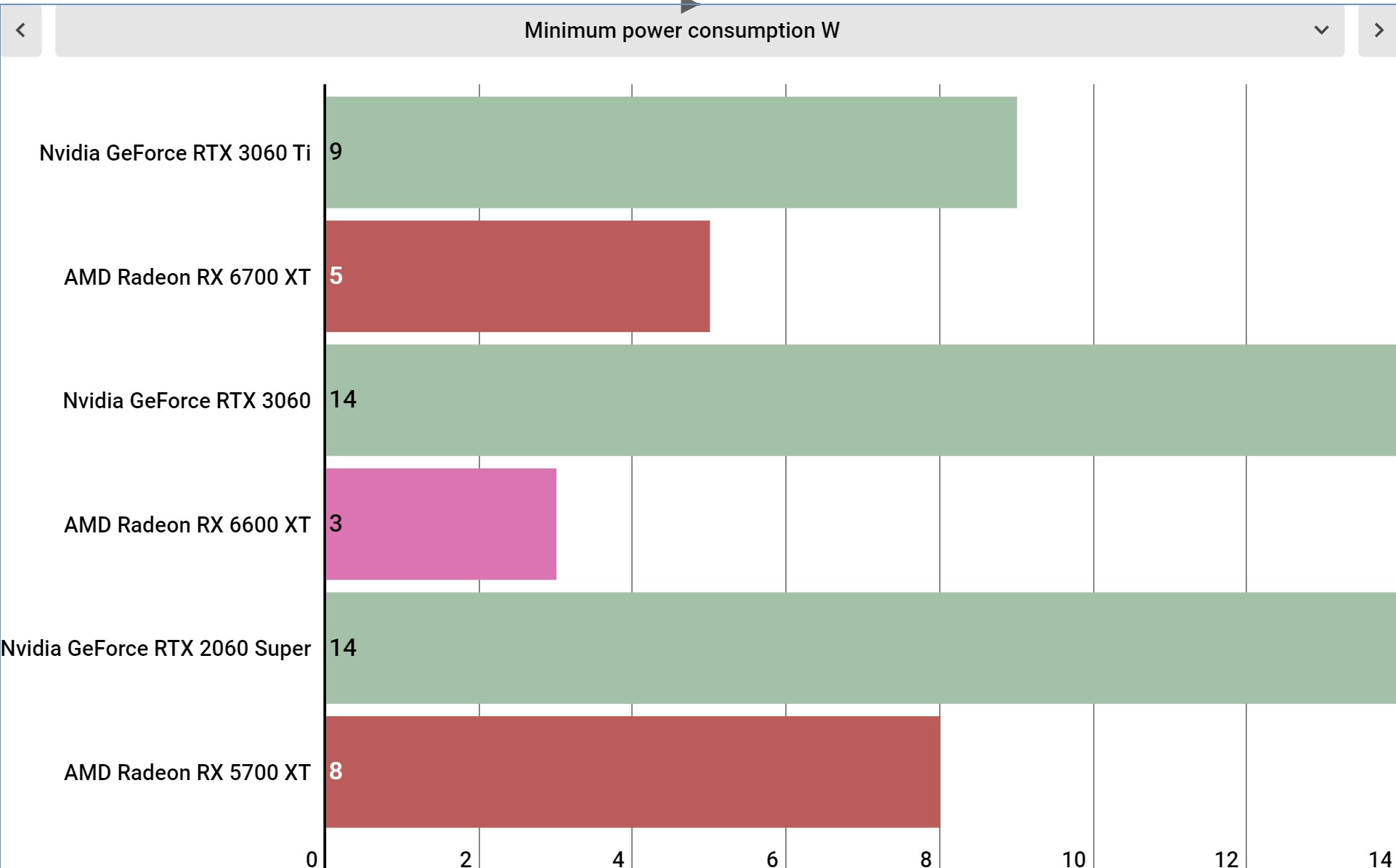
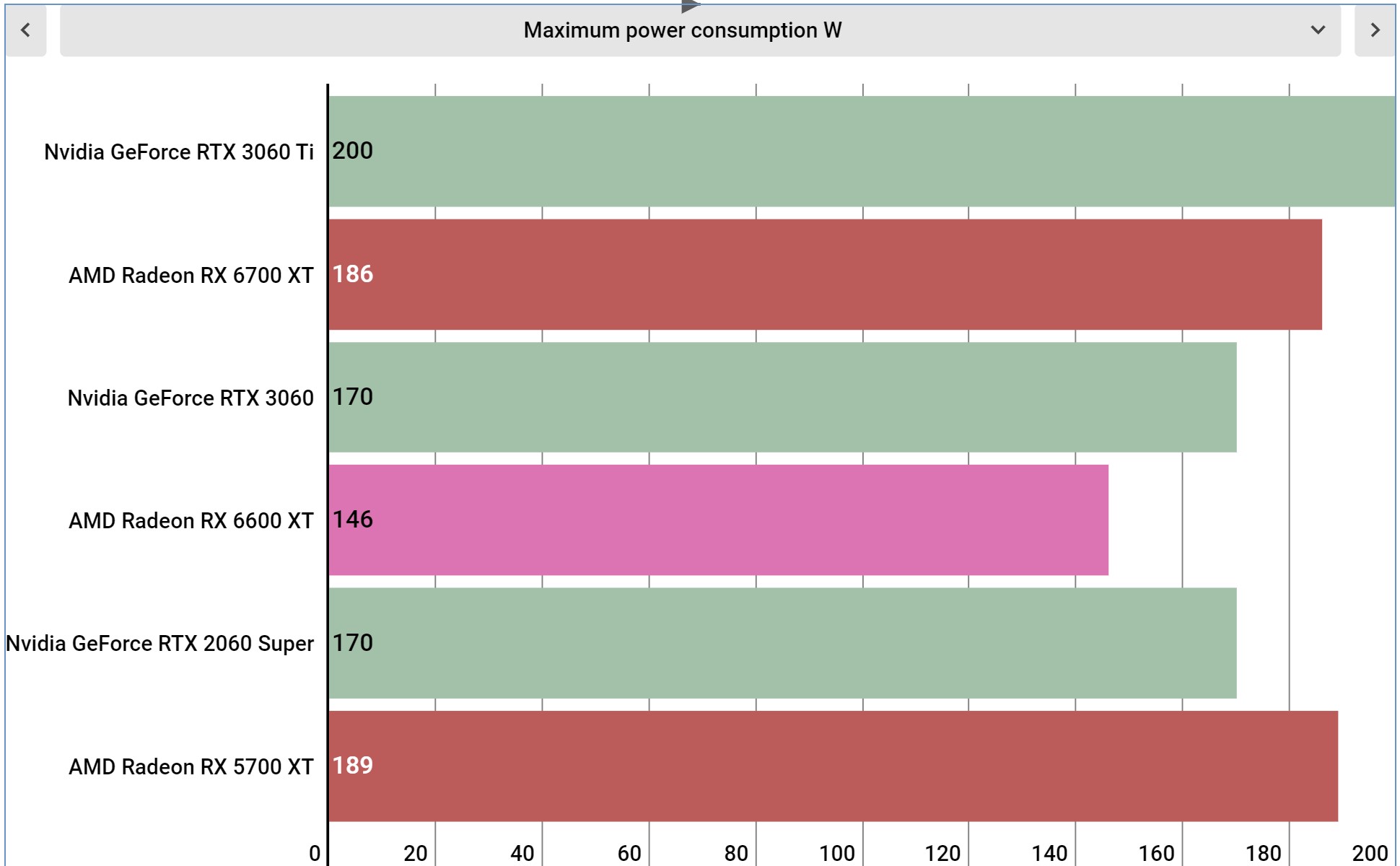
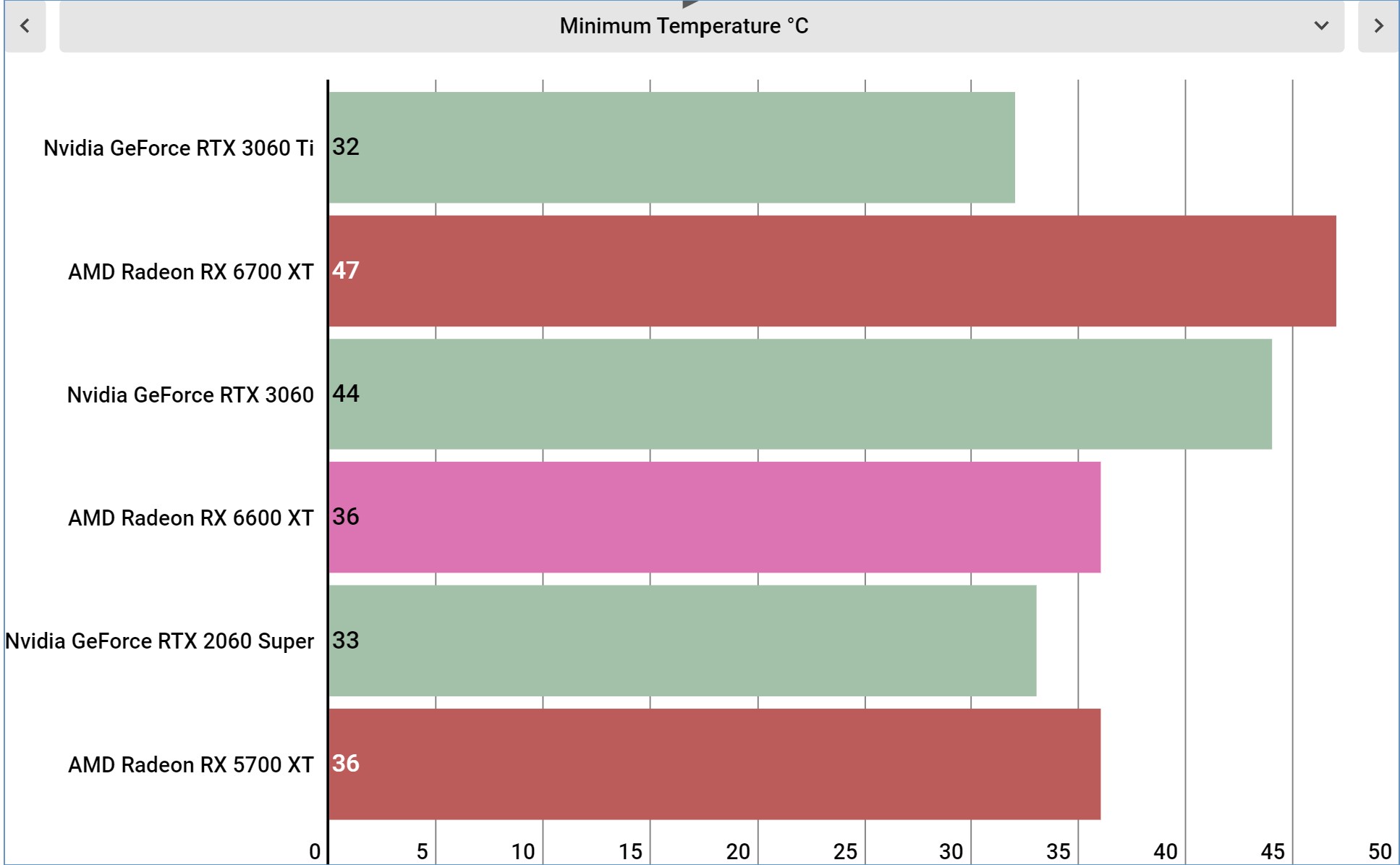
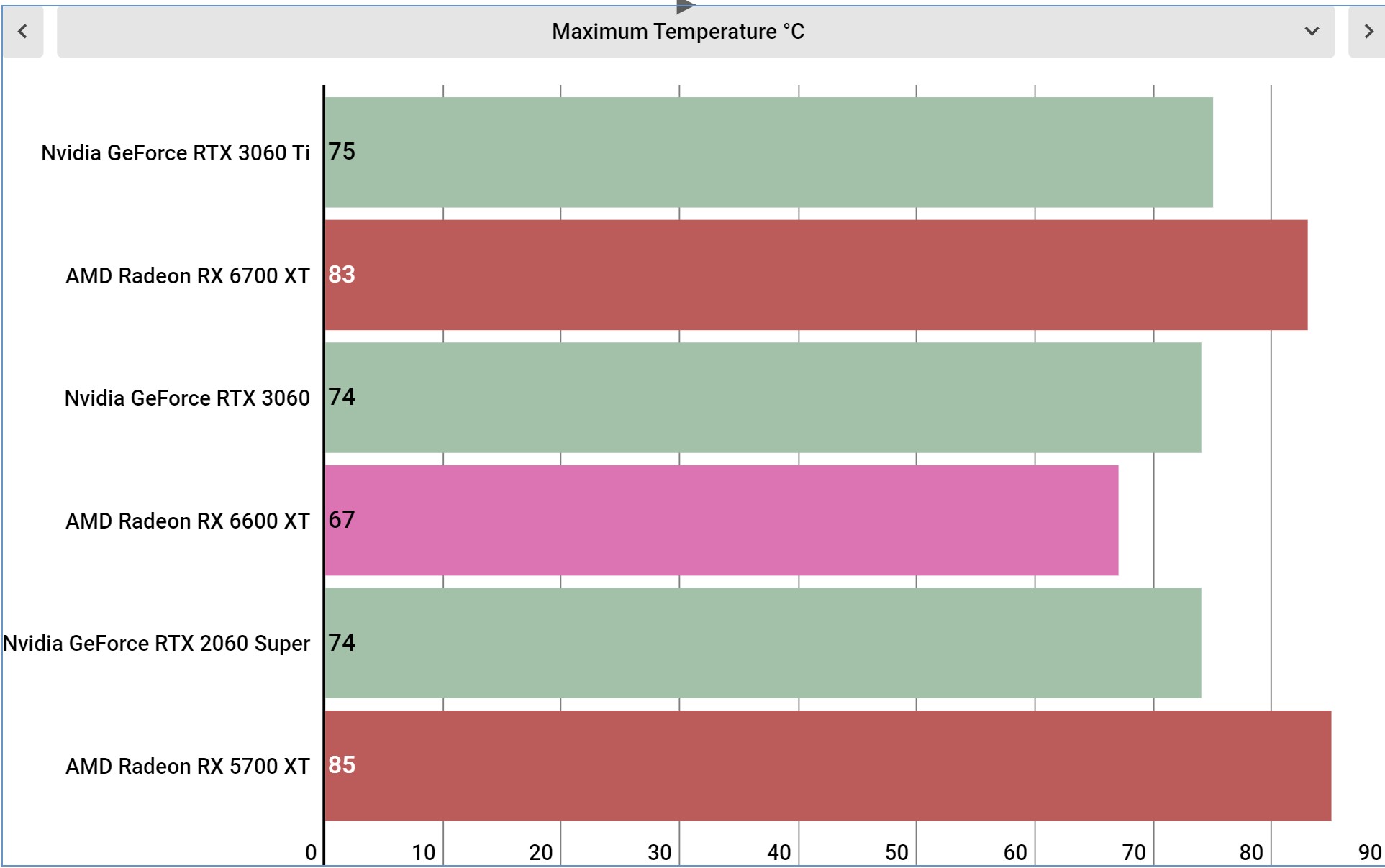
Performance
This is the system we used to test the EVGA GeForce RTX 3060 Black XC:
CPU: Intel Core i9-11900K (8-core, up to 5.3GHz)
CPU Cooler: Corsair H150i Elite Capellix
RAM: 32GB Corsair Vengeance Pro @ 2,333MHz
Motherboard: ASUS ROG Maximus III Hero
SSD: Samsung 980 Pro @ 500GB
Power Supply: Corsair 850W
With the Radeon RX 6600 XT, AMD is targeting 1080p gamers, and at that resolution the Radeon RX 6600 XT absolutely knocks it out of the park. Every game we ran at that resolution had great performance.
Even in Metro Exodus Enhanced Edition, which is definitely more geared towards Nvidia graphics cards, thanks to the always-on ray tracing, the RX 6600 XT was able to get 52 fps at 1080p, which is more than playable. And while in that title, the RX 6600 XT is just barely beat out by the Nvidia GeForce RTX 3060, AMD's card regularly trades blows with Nvidia's card.
In Dirt 5, the RX 6600 XT is 16% faster than the RTX 3060, and in the original Metro Exodus, it has a 15% lead at 1080p. However, the AMD graphics card is basically tied with the RTX 3060 in Final Fantasy XIV and Horizon Zero Dawn – which isn't a good look with its price difference.
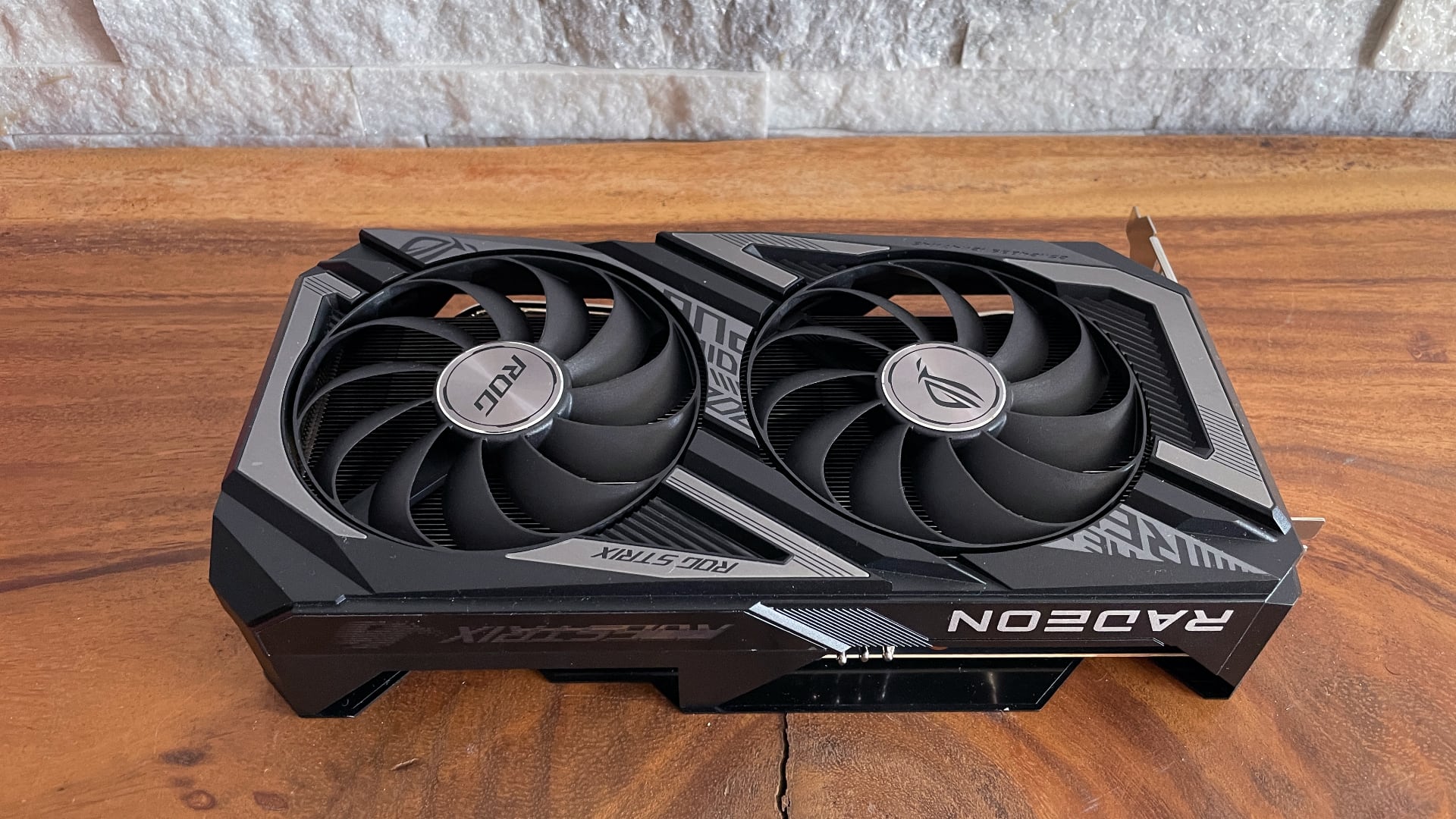
Things get rough for the Radeon RX 6600 XT when you compare it to the Nvidia GeForce RTX 3060 Ti, though. At 1080p, the RTX 3060 Ti is typically around 15% faster than the Radeon RX 6600 XT, despite costing just 5% more. And, in Metro Exodus, the Radeon RX 6600 XT lags a whopping 38% behind Nvidia's card, which is a huge difference.
We get that not a lot of PC gamers are going to go all-out for ray tracing, but it doesn't make sense to pick up the RX 6600 XT unless you can find one that's more than 20% cheaper than the RTX 3060 Ti. And while there are some that would argue that we should compare the prices once the card actually goes live and we see how much prices go up, these MSRP prices are what AMD sets the price at, and where it will sit in the market.
And right now, the AMD Radeon RX 6600 XT is placed basically at the same level as the RTX 3060 Ti, and that's a competition that AMD does not win in any situation.
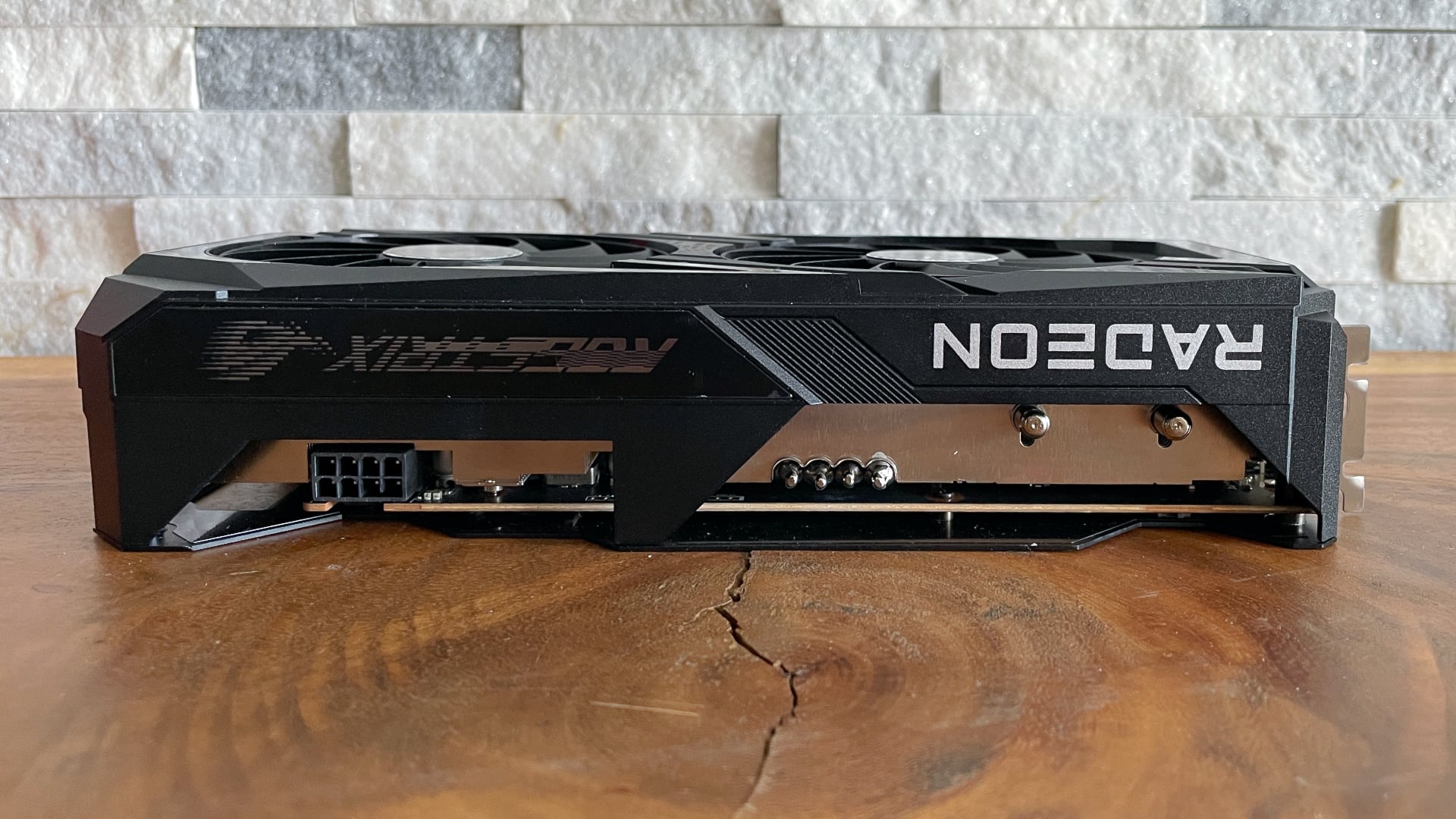
Buy it if...
You'll be playing at 1080p
The AMD Radeon RX 6600 XT will easily handle any current-generation PC game at 1080p with all the settings maxed out.
You don't have a huge power supply
In our testing the AMD Radeon RX 6600 XT peaked at just 146W of power, which means you can easily slot this in a system with a 500W PSU and be fine.
You play a lot of esports
AMD graphics cards in general are a great choice if you play esports games and want to take advantage of tech like Radeon Boost to get better framerates.
Don't buy it if...
You can save up a bit more
When you consider retail pricing, the Nvidia GeForce RTX 3060 Ti is just a tiny bit more expensive than the AMD Radeon RX 6600 XT, and is the better buy.
You want to play with ray tracing
While the AMD Radeon RX 6600 XT does support ray tracing, it's not going to do it better than an equivalent Nvidia graphics card.
- These are the best PC games to play with this GPU
0 comments:
Post a Comment